Ride
For ATVs and UTVs
By ATV Rider
March 30, 2016Looking for a place to mud bog your ATV or UTV? Check out our guide to the nation's top Mud Riding Parks.
 The venue is the host site for many events throughout the year, and is always open for camping and riding too.ATV Rider
The venue is the host site for many events throughout the year, and is always open for camping and riding too.ATV Rider ATV Rider
ATV Rider| Ride Guide | Mud Parks | Contact Sheet |
|---|---|---|
| Busco Beach | Goldsboro, NC | http://www.buscobeach.com |
| Durhamtown | Union Point, GA | http://www.durhamtown.com |
| High Lifter Offroad Park | Shreveport, LA | http://www.hlorp.com |
| Red Creek Offroad | Perkinston, MS | http://www.redcreekoffroad.com |
| Mud Creek Offroad Park | Jacksonville, TX | http://www.mudcreekoffroadpark.com |
| Muddy Bottoms ATV Park | Sarepta, LA | http://www.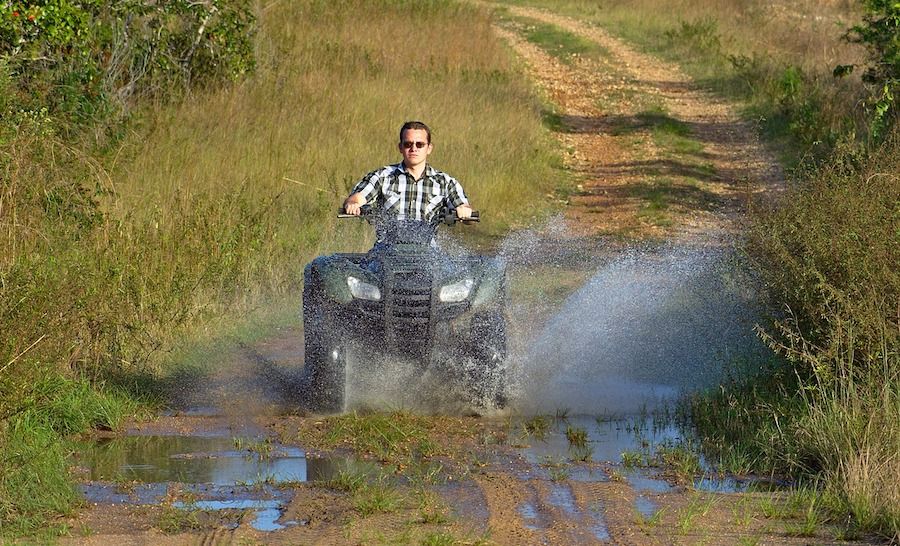 muddybottomsatv.com
muddybottomsatv.com |
| Muddy Joe’s Offroad Park | Kiln, MS | http://www.muddyjoesoffroadrvpark.com |
Is your ATV or UTV Mud Riding Park not on this list? Message us at Facebook.com/ATVRiderMag.
Mud is more than just dirt and water. Mud is an attitude, a way of life and a fascinating subculture. There are ATV riders who live for the sloppiest, messiest conditions and who believe that the ride begins where others turn around.
Years ago, riding mud simply meant aiming for the high ground and hoping for the best. But today, there’s a science involved with fording streams and crossing bogs. Riders who know what they are doing have taken random chance out of the equation through careful preparation and technique. The guys at Highlifter are like that. Their business revolves around preparing riders and quads for mud, both for weekend recreation and full-blown competition. We asked Mike Smith at Highlifter to advise us on his wet wisdom. Here’s what he had to say, first about technique, then about prep.
We asked Mike Smith at Highlifter to advise us on his wet wisdom. Here’s what he had to say, first about technique, then about prep.
1. THINK BEFORE YOU PLUNGE: First, just because you see a rider ride into a deep hole and drive through water up to his handlebars, don’t assume you can do it. This type of riding requires preparation, and stock quads are not ready. While Arctic Cat has taken the first steps toward making a mud-ready machine with the 700 and 650 Mud Pro line, most are not equipped to deal with water. It’s fun but potentially very expensive if you haven’t prepared properly.
2. WATCH AND LEARN: If you’re riding with a group of other riders, don’t get in a big hurry and be the “depth finder.” Take a break and watch where others are crossing deep holes or navigating a bad stretch. Watch the lines they pick and how much trouble they have getting through. Picking the correct “line” or route often makes the difference in getting stuck or not.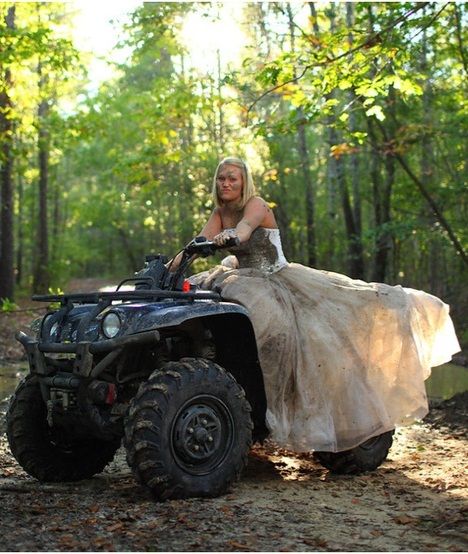
3. SHIFT NOW: If it looks like a bad spot, go ahead and shift into four-wheel drive and the lowest gear you have before starting through. Stopping to shift into a low range or low gear in the middle of the hole will often get you stuck when you lose momentum and try to restart from a dead stop. Momentum and rpm are your best friends when crossing deep mud.
4. CHOOSE YOUR BEST SIDE: Rocking the boat might be bad in a canoe, but it’s fine on a quad. If you feel yourself losing momentum and slowing as your skid plate drags, shift both feet to the same side to push down and let at least two wheels get traction. Push the handlebar on one side down and pull up on the other side. The other side will rotate up and take some weight off the middle where it is dragging. When progress slows even though you are doing this, shift sides and put both feet on the other side; often you can keep moving. It goes without saying that a diff-lock is critical here.
5. USE YOUR HEAD, NOT YOUR THUMB: They say the definition of insanity is to repeat the same action and expect a different result. When you get stuck, stop doing whatever it was that got you stuck. In other words, stop punishing your quad for your mistake. That’s when you break parts. Plus, you just dig it in and make it harder to recover. Get ready to use a winch or tow strap. Everybody gets stuck; it’s not bad. Bad is going back over miles of bad road on the end of a rope.
6. AIRFLOW: If you ride a water-cooled quad in mud, expect to eventually see that “HOT” light. Be prepared for this by taking a pump kit or some way to clean your radiator when it is clogged with mud. Without this, you will be constantly waiting for it to go off and looking for waterholes to ride into to cool it off. This method of dunking red-hot engines in cold water is definitely not a good idea. Highlifter sells pump kits, but you can also put one together yourself.
7. INFO IS GOOD: Install a coolant temp gauge so you can monitor how your radiator is working and stop and clean it before it overheats. You then can get familiar with the temp your engine operates at in normal conditions and see it begin to creep up as your radiator gets clogged up and over-worked. Once the hot light comes on, it takes quite a while to get it to cool off. It’s much better to have advance warning.
8. MUD VERSUS ELECTRICITY: Waterproof electrical connections with dielectric grease, particularly sparkplug connections. If your quad sputters when you cross a relatively shallow creek or mudhole, that means your spark plug boot is not doing its job, probably because it’s getting hard from miles or age and not making a good seal. Put a good-size glob in the boot and stick it back on the plug. It doesn’t take much; about as much as the amount of toothpaste you would use if you were getting low in the tube. You can get this at an auto parts store.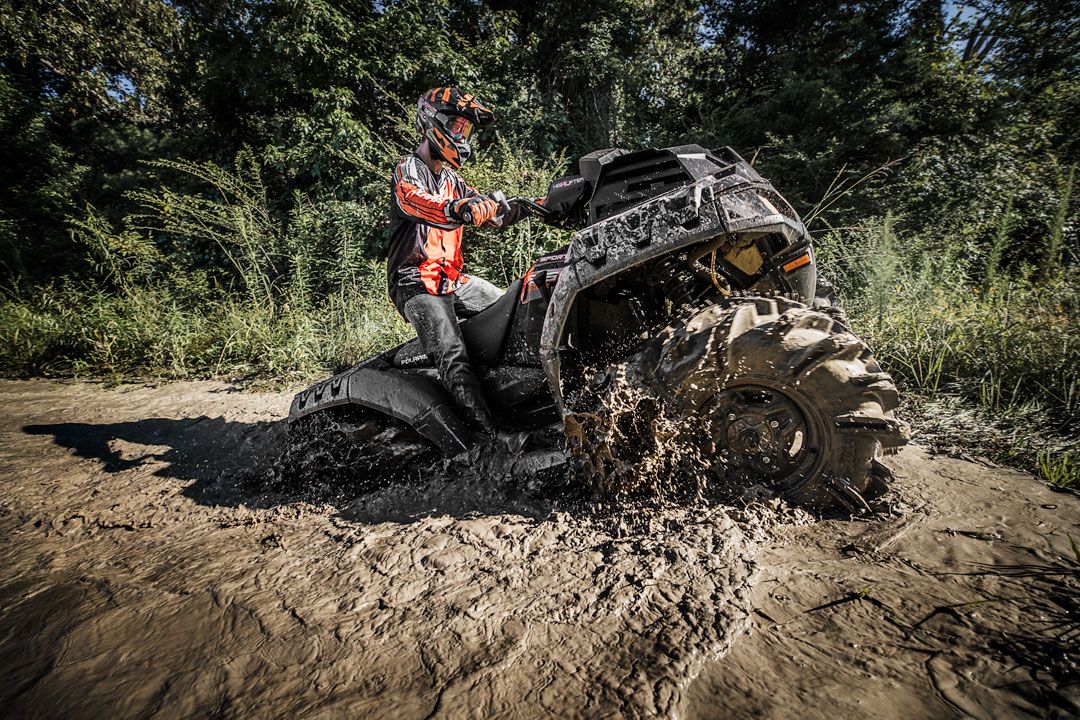
9. MUD VERSUS COOLANT: If your quad has an overflow bottle for coolant with a vent hole in the cap, beware. If it’s mounted below the waterline, chances are it takes on muddy water with grit every time you go under. Eventually, that will take out your mechanical waterpump seal. Consider making a small snorkel for it to reach handlebar height—you can use a piece of vacuum line with a small plastic fitting and some silicone.
10. CROSSING THE DATA STREAM: The most powerful equipment you have is knowledge and experience. The neat thing is that you can get it from others without spending extra money (assuming you have access to the Internet). Look at a number of ATV websites where people who mudride congregate. Since you already know enough to understand what they are talking about, you can really become an expert by participating in the many discussions of topics like these and much more advanced ones as well. Check out www.highlifter.com. They have somebody on there who lives close to you and rides like you do and will be glad to answer your questions.
MUD SETUP
THE TOP 10
ITEMS ON YOUR MUD MUST-DO LIST
• Once you arrive at the muddy stream crossing, it’s too late. The proper way to avoid getting stuck is to build your quad with mud in mind. This would be easy if you knew how deep the mud was ahead of time, so over-preparing is the key. Beyond that, there’s a big difference between preparing for a mud ride and preparing for competition. Mike pointed out that hardcore competitors often have tricks like filling tires with water and using weights to minimize floatation. The modifications recommended here are aimed more for general mud recreation and are listed in order of priority.
1. AGGRESSIVE MUD TIRES: O.E. tires are made for fair-weather riding at speed. They can deal with a few inches of mud, but beyond that, you need specialized mud tires with big, deep treads. Highlifter makes Outlaws for this purpose, but there are at least 20 makers in this field, all with different approaches. You can see the difference in tread, and they are designed to clean themselves as they rotate.
You can see the difference in tread, and they are designed to clean themselves as they rotate.
2. LIFT KITS: Stock quads don’t have the ground clearance for deep mud or the fender clearance for big tires. A lift kit might be required before you can mount tires as large as you want. A kit raises the belly of your quad 2 or 3 inches and keeps it from dragging and getting stuck.
3. WINCH: Along with tires, this is the most commonly purchased option. Get plenty of capacity and a poly rope, which is safer, easier on your hands and actually stronger than wire rope.
4. SNATCH BLOCK: If you own a winch, you need a snatch block. By running the winch line through a pulley (connected to a stationary object), you double the capacity of your winch. Obviously, it requires twice the line length, but if you are in a real bind, it provides twice the power you would otherwise have available.
5. SNORKEL KIT: These are not for everybody, but if you plan on following the really bad quads through the really deep stuff, you’ll drown out. You also need to look at these as insurance in case you accidentally get too deep. They are not meant for cruising around looking cool at periscope depth.
You also need to look at these as insurance in case you accidentally get too deep. They are not meant for cruising around looking cool at periscope depth.
6. CLUTCH KIT: Your quad’s CV transmission is tuned for a specific tire size, as it came from the factory. It will tolerate slightly larger tires, but not much. A good clutch kit retunes the CVT to the size tires you are now using and delivers lots more power than you would have had with stock tuning. Check out the August issue of Dirt Wheels for more on this topic.
7. STRONGER CV AXLES: There is no doubt that in this environment, you do have to pay to play. Super-aggressive tires, high horsepower and deep mud will eventually introduce you to a need for stronger axles; not all at once and probably not on day one, but eventually you will see the wisdom of a program to beef up your running gear.
8. HIGH-FLOW AIR FILTER, PERFORMANCE EXHAUST, FUEL MODS: You can’t have too much horsepower and, more importantly, torque. Sink 29.5-inch Outlaws in 2 feet of peanut butter-consistency mud and you have a machine that needs steroids. They come in brightly colored boxes and make a nice growl where your bike was formerly silent.
Sink 29.5-inch Outlaws in 2 feet of peanut butter-consistency mud and you have a machine that needs steroids. They come in brightly colored boxes and make a nice growl where your bike was formerly silent.
9. PERFORMANCE BELT: Most belts are fine and are reasonably durable. They don’t break, but glaze over and squeal and slip when you try to get your transmission to do something it’s not tuned to do (like climb a big hill in high range, for example). After the other modifications listed, the belt will be the weak link in the drivetrain. Highlifter’s belts have Kevlar, and when overheated will cool and go again as opposed to the one that just glazes and keep slipping. Regardless of whose belts you use, keeps a spare. It’s very good insurance for an item that takes lots of abuse.
10. COOLANT TEMP, RADIATOR WASHER: As we mentioned earlier, one of a mud rider’s biggest headaches is dealing with mud-clogged radiators. Many radiators hang low and are a prime target of mud splatters.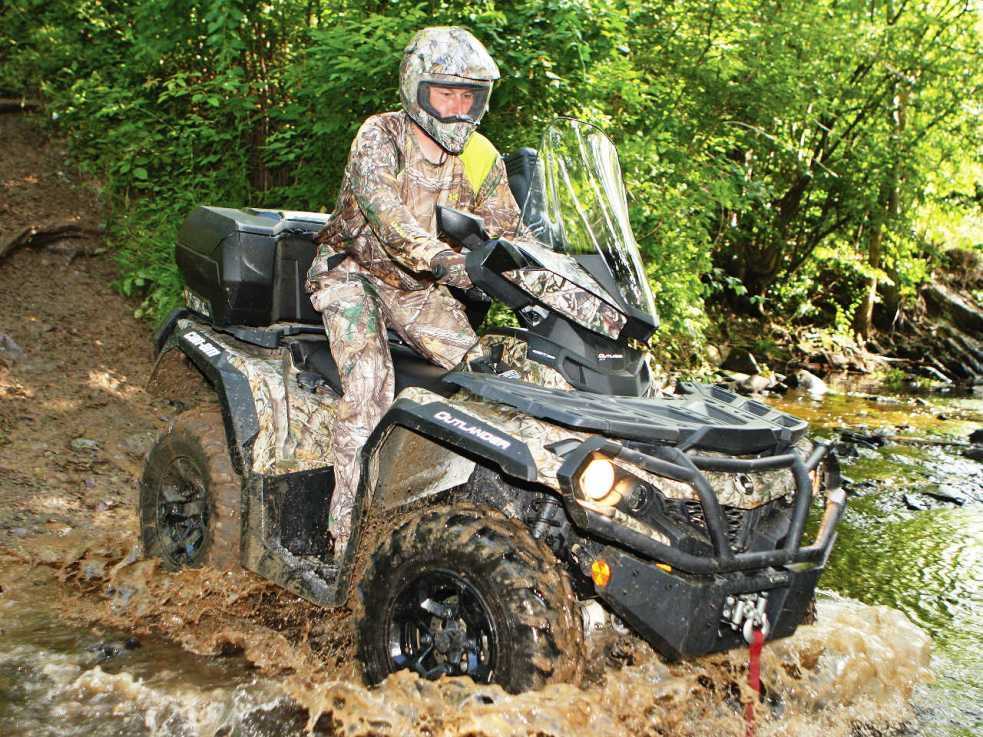 You need to know when your motor is starting to heat up and then be prepared to cool it off. A radiator washer kit lets you drive up to a creek or mudhole, drop in the pump and hose off the radiator with a high-flow nozzle. In a few minutes you’re ready to roll with your temp comfortably in the normal range of about 180 degrees.
You need to know when your motor is starting to heat up and then be prepared to cool it off. A radiator washer kit lets you drive up to a creek or mudhole, drop in the pump and hose off the radiator with a high-flow nozzle. In a few minutes you’re ready to roll with your temp comfortably in the normal range of about 180 degrees.
You can view all these products at www.highlifter.com and log on the forum and ask any questions you may have. You might even meet someone who rides near you.
ATV is suitable for riding in mud, off-road and difficult trails. The rider will ride through loose soil, deep puddles, clay, wetlands, etc. But in order to ensure your own comfort and not “kill” the ATV, you should understaff it and follow the recommendations.
These are aluminum plates that are attached to the standard holes in the bodywork. They protect the lower components of the ATV from mechanical damage: the engine crankcase, transmission and suspension elements.
They protect the lower components of the ATV from mechanical damage: the engine crankcase, transmission and suspension elements.
These tires are more resistant to punctures and damage, improve traction, handling and flotation of the ATV.
Helps to pull stuck vehicles out of the mud.
The first thing that takes a hit off-road is the radiator. If we move it to the front luggage area, dirt, mud and small stones will not get inside. The engine will also cool more efficiently.
Protect against dirt, dust and stones flying from under the wheels. Made from durable frost-resistant plastic. Attached to the clips, fit snugly to the arches of the ATV.
Sealed to protect your luggage from moisture, dirt and dust. Are established on a forward or back platform.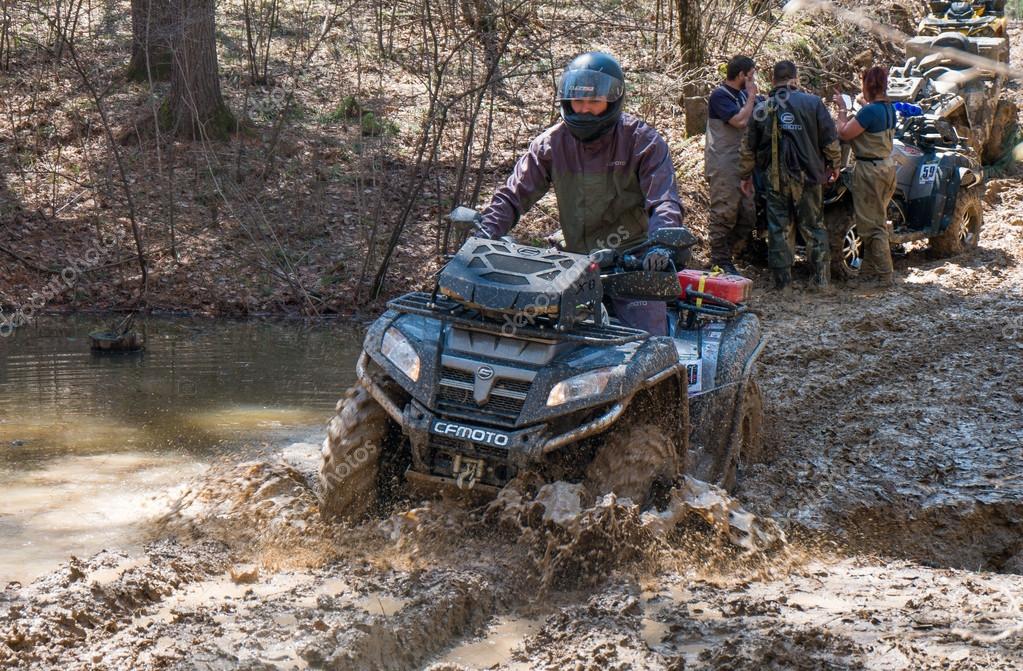 Some models have reflectors, which will additionally indicate the ATV in the dark.
Some models have reflectors, which will additionally indicate the ATV in the dark.
Additional dirt protection. Equipped with a special lock that does not allow the door to open when shaking. Sheathed with 3 mm aluminum sheet.
Doors are installed in standard ATV mountings and do not require modifications.
Mud skidding results in increased fuel consumption, so it makes sense to stock up on extra fuel.
Canisters are designed to store and transport fuel, oil and water in all conditions. They are attached to the ATV from either one of the cargo platforms, or on the wardrobe trunk.
Make sure the ATV is in good working order. Checklist:
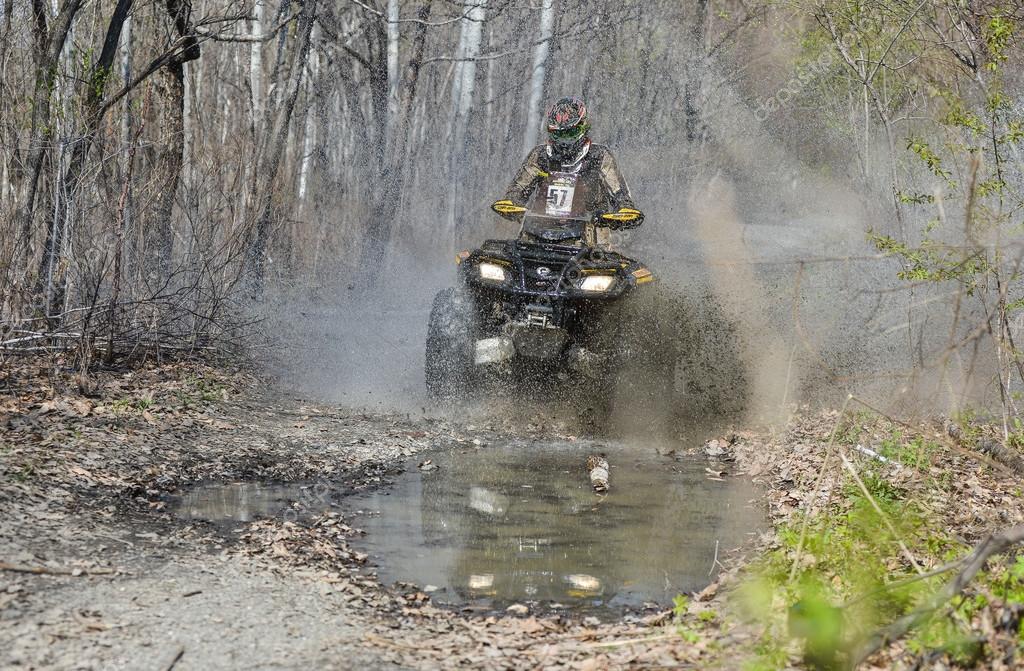
Before riding in the mud, the driver needs to master the rear, middle and front stance in order to transfer weight on the right axle in time. Also extreme recommend:
If the ATV is stuck, do not increase the speed and make sudden movements, otherwise the ATV will only “dig in” deeper.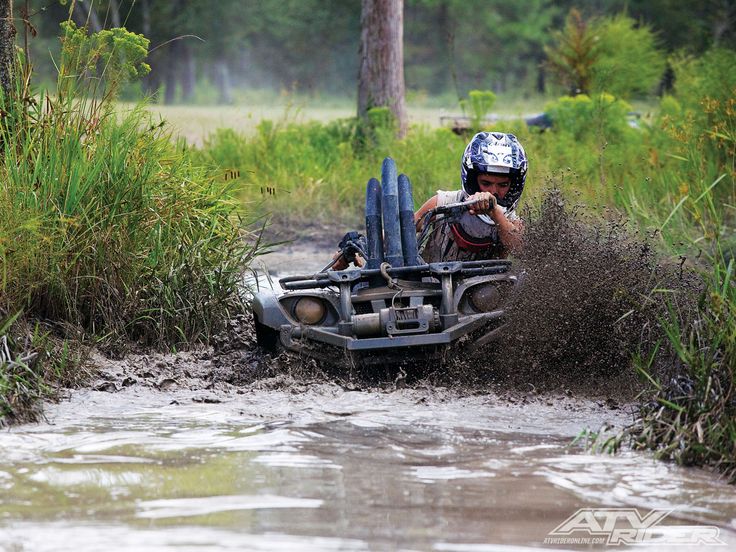 Instead, swing the equipment back and forth or use a winch.
Instead, swing the equipment back and forth or use a winch.
To prepare a quaddress for mud in the mud, a sear protect the bottom and levers, as well as remove the breathers. This will protect the ATV from damage after driving through deep water, as well as hitting stones and logs. In addition, it is desirable to put a winch, additional lighting and several other accessories. We will tell you more about off-road tuning in the article.
Radiator extension . Without it, when overcoming deep puddles, swamps and fords, dirt, mud, clay or small stones will clog the radiator cells. The engine will overheat, and only a high pressure washer will completely get rid of contaminants.
Installation of snorkels and outlet of breathers under the dashboard .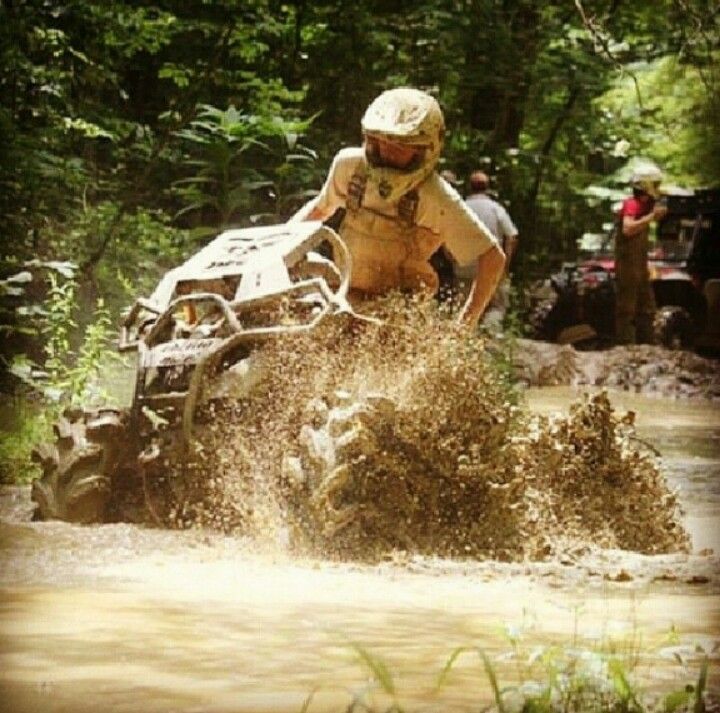 If, when overcoming water barriers, liquid enters the engine or transmission, this will lead to the formation of an emulsion - because of this, the parts will lose their oil film and will deform under load. There are usually three snorkels - for engine air intake, for variator air intake, and also for air outlet from the variator. Breathers are removed from the gearboxes, expansion tank, carburetor, gas tank and fan motor.
If, when overcoming water barriers, liquid enters the engine or transmission, this will lead to the formation of an emulsion - because of this, the parts will lose their oil film and will deform under load. There are usually three snorkels - for engine air intake, for variator air intake, and also for air outlet from the variator. Breathers are removed from the gearboxes, expansion tank, carburetor, gas tank and fan motor.
Wiring seal . It is necessary to treat all contacts with a spray or lubricant for electrical equipment. If they already have salt deposits, cleaning will first be required.
Protection kit . Prevents frame, suspension, engine and transmission damage. There are two kinds. Plastic made of HDPE and similar materials with the same thickness weighs less and slides better over obstacles. Also, snow sticks to it less, and you can straighten the bent element manually. Aluminum better protects against strong impacts.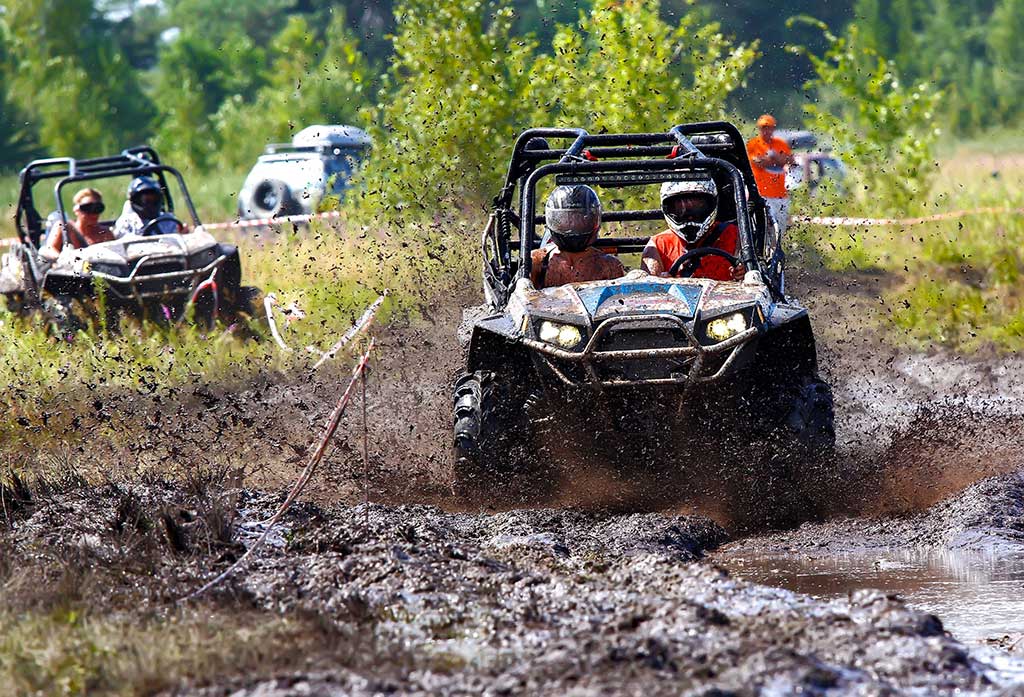
Winch. Winch pull must be 2.5 times the weight of the ATV. It is expressed in pounds (lbs). To convert to kilograms, multiply by 0.454. For example, 2500 pounds is 1135 kg. A winch with this tractive effort is suitable for ATVs weighing up to 455 kg. Also, when buying a winch, you need to pay attention to the material of the cable - synthetic ones made of ultra-high molecular weight polyethylene are lighter, they are not inferior in strength to steel ones, they do not sink, they are maintainable and safer when broken, you can work with them without gloves.
Power bumpers (kangarins) . Needed to protect the plastic cladding, wings, optics and radiator (if it is located as standard).
Bedlocks. These are double ring locks that hold the tire firmly against the rim's bead. Prevent disassembly and accumulation of dirt between the disc and rubber, allow you to drive with minimal tire pressure.
Lift. It consists in increasing the length of the levers and actuators / installing tuned shock absorbers and springs. Simply putting spacers is cheaper, but at the same time, the suspension resource will decrease due to the critical angles of the cv joints and ball bearings.
Off-road tires . The larger the wheels, the higher the ground clearance and the larger the contact patch with the surface. Lugs also affect patency. When choosing tires, it is important to consider engine power - all-terrain vehicles with an engine capacity of less than 500 cm³ are especially sensitive to its diameter. Also keep in mind that large wheels may require a lift, the installation of lightweight weights in the CVT, fender trimming and other alterations - it is better to check this with the owners of a particular model on the forums in advance.
Fender extensions . Protect the driver from water, dirt and stones that fly from under the wheels.